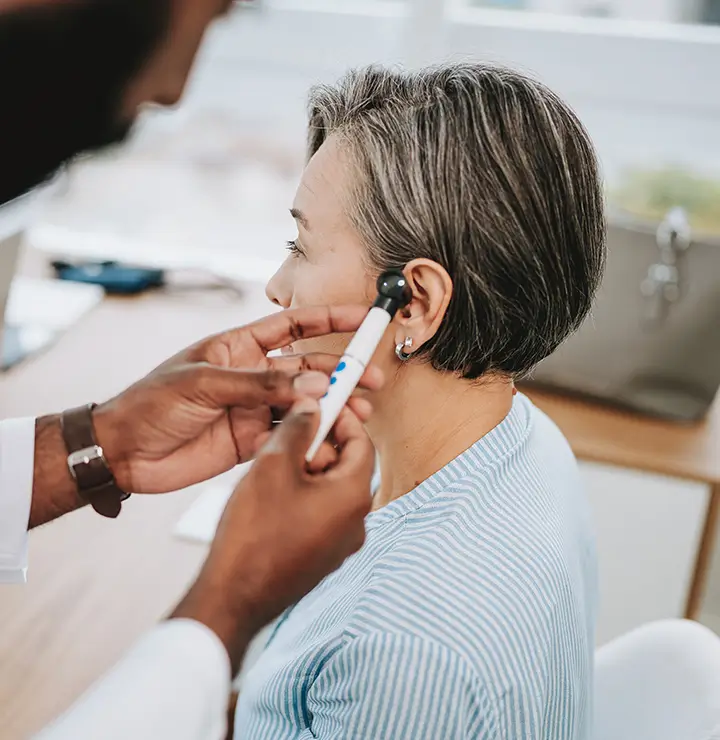Otosclerosis
Otosclerosis is a condition of the bone of the inner ear where the bone of the inner ear grows and stiffens the stapes bone (the third bone of hearing).
Symptoms
The most common symptom of otosclerosis is hearing loss. In women, the hearing loss may occur or worsen during pregnancy.
Causes
The cause of otosclerosis is unknown. It is generally hereditary, but there is also evidence that a virus may cause it.
Anyone can get otosclerosis; 10 percent of white males and 18 percent of white females have otosclerosis. Of those, 10 percent will have symptomatic hearing loss.
This means that in the white population, 1 percent of males and 2 percent of females will have otosclerosis to the degree that causes significant hearing impairment. Sometimes the hearing loss occurs on both sides.
Otosclerosis is much more rare in African-Americans, Asians and Native Americans.
Diagnosis
After a complete history and physical exam, your physician will perform some diagnostic tests, which may include:
- Audiogram
- Tympanogram
- CT scan of the temporal bone
These tests will help confirm the diagnosis and rule out any other causes for hearing loss.
Treatment
A comprehensive evaluation of your hearing and a consultation with an ear specialists is necessary to determine the best treatment option.
There are three options for treating otosclerosis:
- Do nothing. Otosclerosis is not a fatal disease, if the hearing loss does not bother you, you do not have to do anything about it. The disease is generally progressive though. So, as time goes on, the hearing will get worse.
- Use a hearing aid. Depending on the nature of the hearing loss, the patient’s medical condition and patient preference. A hearing aid may be recommended for the treatment of otosclerosis.
- Stapedectomy. During this surgery, the third hearing bone (stapes) is removed under the microscope with a laser and replaced with a prosthesis which connects the second hearing bone (incus) to the inner ear. The surgery takes less than an hour and is 90 percent to 95 percent successful in restoring the hearing to normal levels. The main risk of the operation is a 1 percent chance of permanent hearing loss and persistent dizziness.
Innovations
- The "SMART" Piston. Our physicians developed the placement of this prosthesis, which clips onto the second bone of hearing and is activated with heat. The placement of the "SMART" piston is thought to be safer because the small likelihood of complications in manually clipping the prosthesis onto the second bone is reduced.
- Reduced post-surgery dizziness and hearing loss. Other techniques developed by our physicians have been found to reduce the likelihood of dizziness and high frequency hearing loss after surgery.
- Reduced post-surgery taste changes. In our surgeries we have found that we never have to cut or stretch the chorda tympani (taste nerve), which can cause problems. This nerve is routinely cut by some surgeons to obtain better access to the stapes, leaving a taste change/loss in most patients. We have not found this to be necessary.








